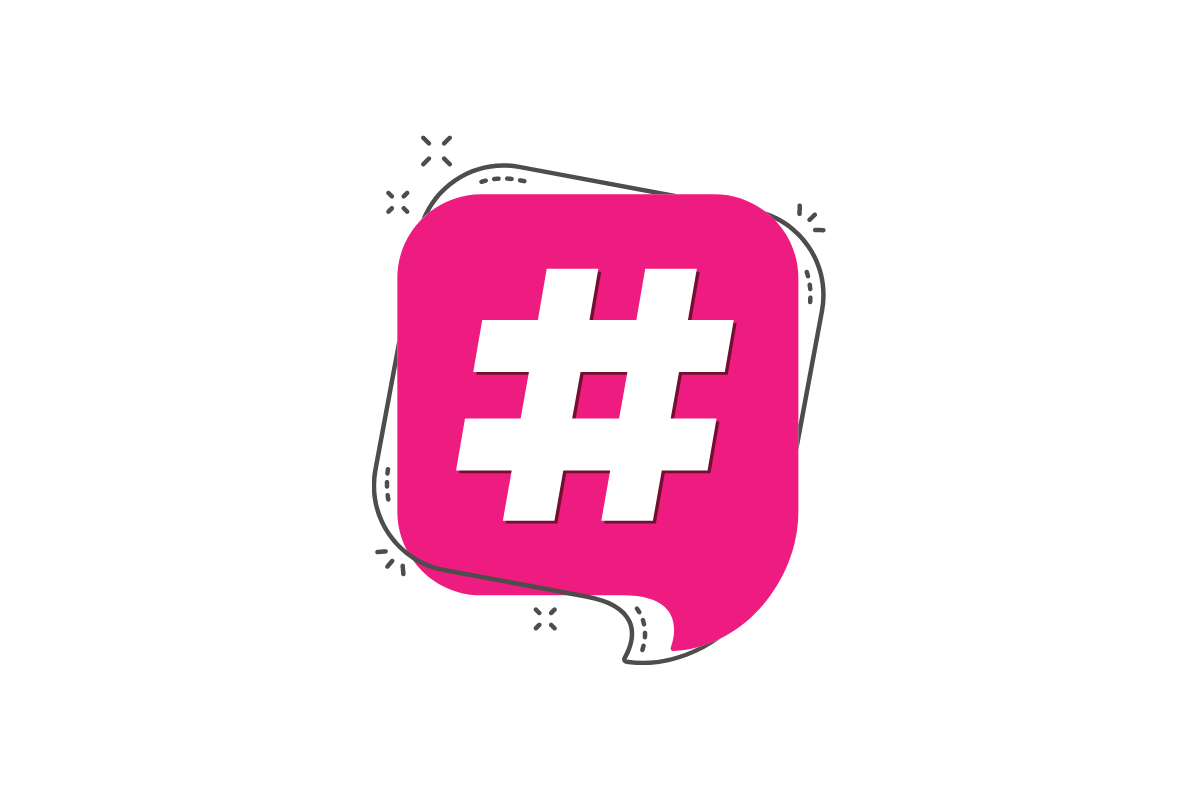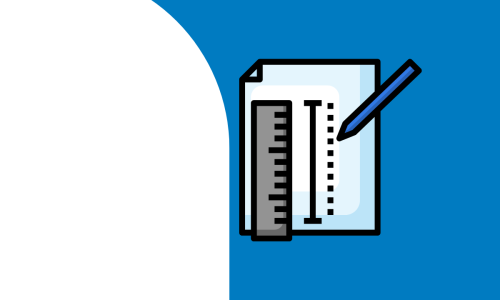Table of contents
Czytasz teraz:
Choosing Hashtags for Instagram
Close
Instagram Hashtags are not, as in other social media platforms, an addition to the main content. In this medium, they are an integral part of the publication – without them, you can’t count on reach, regardless of the level of attractiveness of the post. However, this does not mean that we can enter random hashtags and rest on our laurels waiting for results. The selection of tags to which the post will be linked should be conducted on the basis of research, focused on filtering out the most popular tags for a given content.
How Many Hashtags Should I Add?
There are many different opinions as to how many hashtags should be added to a single post. This disagreement is due to the fact that Instagram’s algorithm changes very quickly and thus the visibility of posts with a specific number of hashtags can also change. According to recent reports, it’s recommended to add 3-5 hashtags to a post, while only a few months ago it was advised to add 8-15 hashtags. Which data to stick to? The Later.com brand decided to check it out by analyzing data from 18 million posts, which is already a sample from which some conclusions can be drawn.
These analyses show that the reach of a post increases significantly when we add more than 5 hashtags to it. According to the same study, posts with 30 hashtags achieve the highest engagement – they statistically have the most comments and likes. Interestingly, however, they don’t have the highest reach at all – the reach gains the most value for posts with about 20 hashtags.
Such research, however, cannot be treated as the final word, as the visibility of posts may vary for different industries or even a specific post. Additionally, Instagram is constantly improving its own algorithm for finding content, and as we know from Google’s algorithm updates, one change can make quite a mess in the results. That’s why it’s a good idea to test adding different numbers of tags to posts and see which option yields the best results. What you can be relatively sure of is that it’s worth going beyond 5 hashtags, because here the jump in visibility is strongly felt.
(You will find the rest of the article below the form)
Contact us and get a free quote
We will analyze your business and prepare an individual price offer for the optimal marketing mix for you. Completely free.
Verseo spółka z ograniczoną odpowiedzialnością with its registered office in Poznań, at the following address ul. Węglowa 1/3, 62-122 Poznań is an administrator of your personal data.
About Verseo
Company’s office is located in Poznań. Company is entered into the register of entrepreneurs, kept by the District Court of Poznań – Nowe Miasto i Wilda in Poznań, 8th Commercial Division of the National Court Division under number 0000596164, NIP (Tax Identification Number): 7773257986. You can contact us by writing a letter on the address indicated above or e-mail:[email protected]
You have right to:
- access to your personal data,
- correct your personal data,
- demand to remove your personal data,
- restrain to process your personal data,
- object of process your personal data,
- transfer your personal data,
- withdraw consent.
If you think we process your personal data not in accordance with the law, you have right to object to supervisory authority – President of Personal Data Protection Office.
We process your personal data to:
- handle your question, based on art. 6 ust. 1 lit. 6 of General Data Protection Regulation
- promote our goods and services including ourselves in connection with your consent, based on art. 6 ust. 1 lit. a of General Data Protection Regulation
- protect or claim in connection with our reasonable interest, based on art. 6 ust. 1 lit. f General Data Protection Regulation
You share your personal data freely. Please remember that without sharing your personal data you will not be able to send us a message, and we will not be able to answer you.
We can share your personal data with trusted recipient:
- providers of tools made for: website analytics, marketing automation,
- hosting operators.
We will process your personal data by the time:
- which is necessary to achieve a specific purpose for which they were collected and after this term by the time which is necessary to protect or possible claim,
- of withdraw your permission .
We don’t process personal data in a way, which would involve making only automated decisions about you. More information about processing of personal data you can find in our privacy policy.
Choose Hashtags on Insta – the Basics
Instagram Hashtags in a post should be well matched to the content of the post, as the platform is increasingly concerned with ensuring that users get results that are best suited to their needs. So it’s likely that the rule of thumb will continue to be that the posts that get the most reach are the ones with the best-matched hashtags, not the ones with the most hashtags. So instead of struggling to get to 30 tags, it’s better to focus on carefully selecting fewer.
Hashtags for posts can be divided into several basic categories:
- industry-related – i.e. those that refer to the area of the market you operate in, e.g. #socialmediaagency, #hairdresser, #cosmetics #natural, #seo,
- related to the topic of a specific post – i.e. describing what’s in the photo, video, etc,
- related to the location – describing what country, city, or specific place you are in, e.g. #italy, #poznan, #mcdonalds,
- social – which allow you to attract groups of people with specific interests, e.g. #diyfomedecor, #travel,
- so-called everyday hashtags – characteristic for the content posted frequently, without any occasion, e.g. #photooftheday, #instadaily,
- occasional – related to a specific holiday or occasion, e.g. #blackfriday, #christmas,
- related to products or services, e.g. #bots, #balsam.
These categories do not exhaust the list of available hashtags, but they can help you choose – thanks to them you know where to start your search. However, it’s worth remembering that we do not always have to use all types of hashtags. It’s best to choose only those that are relevant to your content.
Hashtags on Insta – the best search methods
Methods of choosing hashtags on Instagram are sometimes different and each publisher sooner or later finds one that is convenient for him. However, if you’re just starting out on Insta, it’s a good idea to have an idea of what methods are available in general.
The first option is to create tags yourself, related to our business, industry and type of content. We can create a list of hashtags, grouping them into those that can be used in every post, and those that are advisable only for one publication or series of publications. However, we must keep in mind that what we think is a good hashtag may not necessarily already work on Instagram and thus be frequently searched. Therefore, the next step in this method should be to type the selected hashtags one by one into the Instagram search engine and see how many posts have already been published with that particular tag.
Niche hashtags, i.e. those with a low number of searches, will not provide the desired visibility, so it’s advisable to discard them and suggest related hashtags with more reach that the Instagram search engine will show us. This way, the pool of available tags will include only those that provide real benefit. About what “few searches” means in this case and how popular the hashtags should be, you will read a little below.
The second method is to monitor the activities of the competition. We can select brands with a similar profile and list the hashtags that they use in their content. Then, from this list, we choose those that we can use on our profile and check this list in the Instagram search engine for popularity. Using this method, however, it’s worth screening not only the biggest brands in the industry, but also businesses similar in size and scope of services to the one we ourselves run. This will allow us to identify moderately popular phrases, on which it will be easier to position our entries.
The third method is to use tools for finding valuable hashtags. After entering any keyword into the tool, we will get a list of hashtags related to it, which are recommended for the given topic. Most tools also give us information about the popularity of each tag, which makes searching this way simpler and takes less time. What’s the disadvantage of this solution? Certainly the fact that many of the hashtag search programs are paid. There are also free tools, although the number of options available in them may be limited. Therefore, it’s worth testing several search engines to choose the one that best suits your needs.
- Read the article: Social Media Tools for Planning
How Large Should We Choose Hashtags?
There remains the question of what should be the popularity of the hashtags that we choose for our publication. The hashtags on Instagram we can most simply divide into three categories – large, medium and small. These are quite ambiguous concepts and can be understood differently by different professionals. Most often, however, by large we mean those under which there are several hundred thousand posts or more – sometimes even tens of millions. These hashtags potentially give a lot of audience, but it’s difficult to position for them, because the competition for the top spots is huge. What’s more, such tags are usually very generic, so it’s hard to target an audience that will actually be interested in our content.
Medium hashtags are those that have roughly 100-200 thousand related content. In their case, it’s easier to get to the top of the results, while the potential audience is still large.
Small hashtags are those with less than 100,000 posts associated with them. They are the easiest to get high rankings for, but the number of users who search for them is the lowest. They can still be effective, but it’s a good idea to set yourself a minimum reach here that you won’t go below. It’s generally accepted that it’s unprofitable to use hashtags that have less than 10,000 related content.
Which hashtags should you choose? Two methods are most often proposed: small and medium hashtags that give you the opportunity to be found high in search results. The other is to use all three types of hashtags equally – 10 large, 10 medium and 10 small. This way, in theory, it’s possible to build a snowball effect – a post initially gains reactions and comments with small tags, which makes it easier for it to get high rankings on medium hashtags, until eventually – in an ideal scenario – it also gains popularity on the largest ones. Both of these methods can bring good results, so at the beginning of your activity on Instagram it’s worth testing them and observing which one brings better results for a particular profile.












